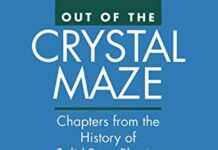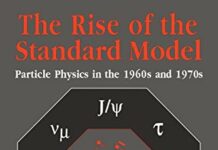
Ebook Info
- Published: 1993
- Number of pages: 528 pages
- Format: PDF
- File Size: 39.39 MB
- Authors: Lillian Hoddeson
Description
This volume is a lucid and accurate history of the technical research that led to the first atomic bombs. The authors explore how the “critical assembly” of scientists, engineers, and military personnel at Los Alamos, responding to wartime deadlines, collaborated to create a new approach to large-scale research. The book opens with an introduction laying out major themes. After a synopsis of the prehistory of the bomb project, from the discovery of nuclear fission to the start of the Manhattan Engineer District, and an overview of the early materials program, the book examines the establishment of the Los Alamos Laboratory, the implosion and gun assembly programs, nuclear physics research, chemistry and metallurgy, explosives, uranium and plutonium development, confirmation of spontaneous fission in pile-produced plutonium, the thermonuclear bomb, critical assemblies, the Trinity test, and delivery of the combat weapons.
User’s Reviews
Editorial Reviews: Review “This book fulfills its declared intention of providing an unprecedentedly full picture of all the actions and processes that were involved in bringing the bombs into existence.” A. P. French, Nature”Generally the presentation is clear and shows the care one expects of the four distinguished authors….The presentation can easily be followed by a scientific reader, and a non-scientist will get an interesting impression of the events.” Rudolf Peierls, Science”…provides detailed discussion of the many experiments that made up the project, including the implosion and gun assembly programs and the interesting consequences of spontaneous fission in reactor-produced plutonium and continues with details of the Trinity test and the actual dropping of the bombs at Hiroshima and Nagasaki. Recommended as an important addition to any college or university library.” Choice”…draw[s] upon a full lode of primary data and explore[s] for the first time the methodology by which researchers at Los Alamos succeeded in their wartime mission. The authors successfully avoid the “official history” pitfall by focusing on individual contributions to scientific and technological advances as opposed to the usual summary of divisional achievements…a well-documented, concise, chronological review of the combination of nuclear physics, chemistry and metallurgy that produced the first fission weapons…also examines the impact of Los Alamos upon the methodology of “big science” at national laboratories in the postwar era.” Peter Neushal, Physics Today”…this is the most technical account of Los Alamos’s war years to appear in print…it considers Project Y’s significant success in the use of ‘big science’ methodology….Critical Assembly is a masterful piece of technical writing accomplished by four authors in conjunction with six scientific advisors and editors….essential reading for technically-minded scholars interested in the history of Los Alamos, atomic research, and the development of modern research labs….” Richard Melzer, Western Historical Quarterly”Critical Assembly has a lot to say about proliferation, much of it relevant to the present. Among other things, it provides a better foundation than ever for evaluating the problems facing countries (or terrorists) with nuclear ambitions.” William Sweet, The Sciences”…an indispensable book….” Barton C. Hacker, American Historical Review”The book has the great merit of illustrating the depth and breadth of the scientific and technical problems faced by scientists in the laboratory at Los Alamos, New Mexico…This is an important book, for its insight into the enormously complex activities at Los alamos and, even more for its tantalizing survey of the implications of that research and development.” Lawrence Badash, Journal of American History”…the book certainly does bring together a lot of information that fleshes out the story.” New Scientist”…a notable and richly detailed work….Critical assembly sets a new standard for writings on wartime Los Alamos.” Canadian Review of American Studies Book Description This 1993 book explores how the ‘critical assembly’ of scientists at Los Alamos created the first atomic bombs. From the Back Cover Unlike earlier histories of Los Alamos, this book treats in detail the research and development that led to the implosion and gun weapons; the research in nuclear physics, chemistry, and metallurgy that enabled clear bomb, the ‘Super.’ Read more
Reviews from Amazon users which were colected at the time this book was published on the website:
⭐The author has written a very detailed account of the making of the atomic bomb. It has some gems of insight into the chemistry, physics, and engineering that was done to achieve this war time goal of a workable weapon. Unfortunately it doesn’t flow well. The book is written in chronological order, but jumps around from one problem to another so you can’t be sure where you are in time. Manufacturing of Putonium is interspersed with separation of Uranium and and the design of the explosive lenses. A great deal of effort is spent on naming all the scientists on each project, but unless you are an historian, most of the names are meaningless. Claus Fuchs and Ted Hall are named, but their significance to the spying for the Russians is hardly mentioned. There are some fascinating details in the book, but if a good editor worked on it, the length could be cut in half, and the story would read much better. I found myself skimming paragraphs to speed up the book and locating the really interesting parts.
⭐Without doubt, this is the finest account of the technical aspects of the race to produce an atomic weapon at Los Alamos before the end of WWII. As other reviewers have noted, you don’t need a degree in physics to read this book; however, you do need endurance.”Critical Assembly” is a plodding, straightforward, chronological narrative of how talent and materials came together to make a bomb; a techno-nerd’s dream. There is no attempt to delve into politics and ethics, make the characters “come alive” with interesting personal glimpses, or place it all in historical perspective. For that you need Richard Rhodes’ “The Making of the Atomic Bomb.”Still, the authors did not write “Critical Assembly” to be a riveting historical novel soon to be a blockbuster movie. For technical information, it is the best single book available. To understand why anyone would care how the atomic bomb was made, let alone plod through the technical details, read “The Making of the Atomic Bomb” first.
⭐Textbook printing is the only thing that lets this excellent book down. Dry, but if you are after the science, then this hits the mark.If you are looking for a story with less math and physics then try what is in many peoples opinion the best book ever written on the subject, the pulitzer prize winning ‘Making of the Atomic Bomb’ by Richard Rhodes. I read it first. One of my top ten all time on any subject.
⭐Hoddeson, Henriksen, Meade & WestfalCritical Assembly, ISBN 0-521-54117-4Cambridge University Press, 2004 The title of the book has double meaning. It denotes the critical assembly of uranium 235, or plutonium 239 to start the chain reaction in an atomic bomb. But it also points to the »critical« assembly of numerous scientists, engineers, technicians and US Army personnel. The authors described how in a race with time all these experts were pursuing a single objective: to make an atomic bomb before the Nazi scientists could (supposedly) do it. Each of them was working in his or her special field, but only a handful of the privileged ones knew they were making an atomic bomb. The resolute, competent and mercilessly hard driving conductor of this huge orchestra was General Leslie R. Groves; its concertmaster was the physicist J. Robert Oppenheimer. To carry on this parable, the musicians – with rare exceptions – were obliged to play their scores with plugged ears. The conductor allowed them to know only their own score, because the whole composition named MED (Manhattan Engineering District) must not become known before the end of the war. Though the fission was discovered in Germany (in the winter 1938/39) many Jewish scientists, being suppressed under Nazi-fascist reign, had left Europe as soon as they could. Among them A. Einstein, H. Bethe, R. Peierls, C. Fuchs (unfortunately also a soviet spy), N. Bohr, E. Teller, E. Wiegner, L. Szilard, E. Fermi and J. von Neumann, to name just the most important ones, arrived in the USA, where they contributed essentially to MED. When Groves began leading the project, it started advancing like an avalanche. What in 1939 was deemed to be a science fiction has become a real bomb within just six years. To quench the thirst for information after the first bomb was dropped on Hiroshima in August 6, 1945, Henry de Wolf Smyth of MED had prepared the book “Atomic Energy for Military Purposes”. In it the most basic knowledge of how an atomic bomb works, as well as the enormous effort of MED to make it, was made public. But in its preface Groves attached a latch, telling us this is all, which can be released at the time; take it, do not ask any further questions – or else! Though many books published after this date had disclosed this or that, the book “Critical Assembly” has definitely broken that latch by disclosing many minute details, which were classified almost up to present time. In the book we learned how the scientists and other personnel, forced to work under the circumstances as outlined above, starting with micrograms of highly enriched uranium 235 and (up to then non existent) plutonium, have gradually extended the production up to kilogram quantities, determined the critical masses, avoided the nuclear explosion, and had managed to build two combat-ready weapons, which ended the war. The details will certainly be interesting for physicists as well as for engineers of chemistry, electronics, metallurgy, mechanics, ordnance and some others. For the layman the minute descriptions would be mostly too difficult to understand and the same might be valid even for professionals, if the matter lies too far outside of their specialty. But as a whole, the book is a great work of reference, with an enormous collection of interesting data, not known so far. On top of all this the book has 74 pages of references. Unfortunately, the Department of Energy was too thorough when removing many “sensitive data” from the original text. Initially numerous details became gradually scarce when the discussion advanced toward August 1945. However, some common sense and simple calculations, based on the data published in many other books, magazines and films, converge to the following conclusions: Approximately 10 lbs (4.53 kg) of plutonium was used in the Fat Man and 70 lbs (31.75 kg) of 88 % enriched uranium 235 in the Little Boy bomb. In the uranium bomb the active material of about 3 critical masses was divided into 4 projectiles and one equilateral cylindrical target, with holes to fit the projectiles, placed inside the massive tungsten steel tamper. When three critical masses are assembled, the chain reaction starts spontaneously within about 0.1 s; so an initiator (with dangerously radioactive polonium 210) is basically not needed. Why was such data not mentioned in the book, which is full of less important details? Today nobody would waste so much precious, highly enriched uranium by not resorting to implosion, which needs less than one critical mass. On the other hand, the metallurgy of plutonium is a science in itself and so is the implosion. So why be so scared?Peter Staric, PhD, BSEELjubljana, Slovenia
⭐This is a remarkable book, truly a labor of love, which details the work at Los Alamos during the A bomb development.It is a great gift for the A bomb aficionado, the kind of reader that is likely to have a copy of ‘Atom Bombs’ by John Coster-Mullen in his/her library.It reconstructs the flow of discoveries and decisions that resulted in the two very different bomb designs realized at the lab.There has not been a more detailed, more comprehensively referenced study produced outside of possibly classified internal histories.The true value of this book however will be to the management student.The lab was able to juggle its limited resources spectacularly effectively, ruthlessly cutting off lines of development that had been bypassed or that could not meet required deadlines, while feeding less obvious but promising approaches such as implosion that eventually became critical to the success of the mission. This example of a combination of effective goal setting and informed scientific leadership remains a model for managing large scale efforts with many unknowns.Critical Assembly fills in the gaps and lays out the story, without neglecting the impact of the different personalities that were all drawn together to make it happen.There is plenty of material here for construction of a really useful management training tool, which would be another worthwhile contribution from the Los Alamos effort.
⭐Learned a lot but not exactly a page-turner. Took some discipline to get all the way through. Still worth the read.
⭐I recommend it for those who have a minimum of science backround
Keywords
Free Download Critical Assembly: A Technical History of Los Alamos during the Oppenheimer Years, 1943–1945 in PDF format
Critical Assembly: A Technical History of Los Alamos during the Oppenheimer Years, 1943–1945 PDF Free Download
Download Critical Assembly: A Technical History of Los Alamos during the Oppenheimer Years, 1943–1945 1993 PDF Free
Critical Assembly: A Technical History of Los Alamos during the Oppenheimer Years, 1943–1945 1993 PDF Free Download
Download Critical Assembly: A Technical History of Los Alamos during the Oppenheimer Years, 1943–1945 PDF
Free Download Ebook Critical Assembly: A Technical History of Los Alamos during the Oppenheimer Years, 1943–1945


